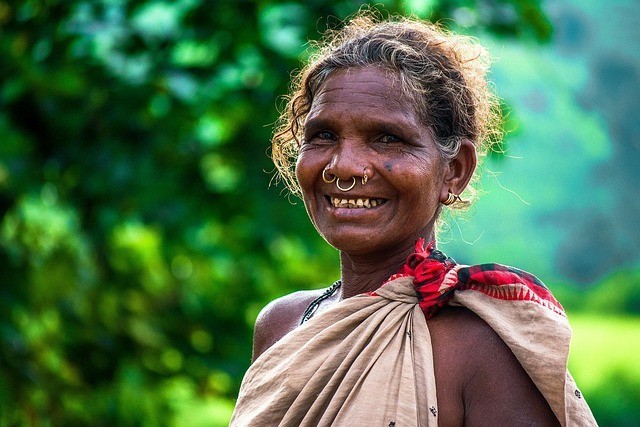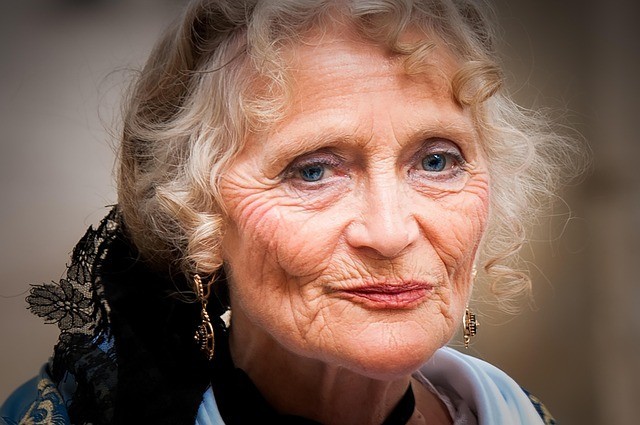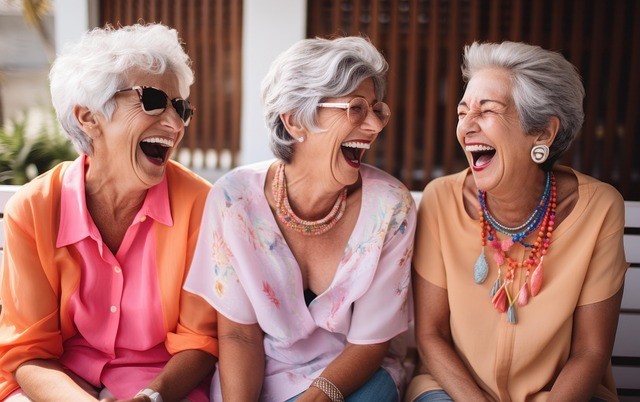views
What is it about aging that primarily impacts females, and what do these statistics reveal?
If you picture the world's "oldest old," odds you're picturing a woman -- and the data back you up.
Women live longer almost everywhere, so they make up the majority at the highest ages. That’s why the story of global ageing is, in a very real sense, a women’s story. And because most women reach menopause between 45–55, we’re also watching a once-in-history phenomenon: entire birth cohorts of women moving through the menopausal transition at the same time, in countries where fertility has already fallen below replacement. Put simply: the future of ageing—economically, socially, and in health systems—hinges on what happens to women in midlife and beyond. World Health Organization+1
Women’s longevity advantage is clear.
On average, women outlive men by several years globally (the UN’s population division noted a 5.4-year gap in life expectancy at birth in recent estimates), and that compounds with age: women account for most people aged 80+. WHO’s Decade of Healthy Ageing report captured the pattern starkly—women were already 54% of those 60+ and 61% of those 80+—and demographic momentum means those shares will remain female-skewed as populations age. United NationsWorld Health Organization
Now layer in scale.
The world’s population aged 60+ will double to about 2.1 billion by 2050, and the 80+ group will triple to ~426 million. In practical terms: every service, workplace policy, and family support system must assume a rising share of older women—often living longer, sometimes living alone, and frequently without adequate pension coverage. That is the core of why ageing is “mostly female.” World Health Organization
Menopause as a Population Milestone
Menopause isn’t a niche topic; it’s a population milestone.
Most women experience menopause between ages 45–55, and the share of women who are post-menopausal is rising as life expectancy increases. WHO notes that by 2021, women aged 50+ already made up over a quarter of all women and girls globally—a proportion that will keep climbing as cohorts age. When fertility is at or below replacement across much of the world, millions of women crossing the menopausal threshold simultaneously changes the demand for health services, workplace flexibility, financial planning, and community supports—every single year. World Health Organization
What the numbers imply—for families, workplaces, and communities
- HEALTH SYSTEMS: More women living longer means more years lived after menopause, with common needs around vasomotor symptoms, sleep, mental health, bone health, cardiovascular risk, urogenital symptoms, and sexual well-being. WHO frames menopause care as an integral part of healthy ageing—yet notes that awareness, provider training, and service coverage are still limited in many countries. That gap will strain systems as the 60+ population doubles. World Health Organization+1
- HOUSEHOLDS & CAREGIVING: Older women are more likely to live alone—often due to longer survival and widowhood—which can elevate risks of isolation and unmet care needs. UN DESA reports older women are roughly twice as likely as older men to live alone, shaping demand for community care, transport, digital inclusion, and age-friendly housing. United Nations
- INCOME SECURITY: Lifetime gender gaps in paid work and pension accrual mean higher risks of poverty for older women—especially where contributory pensions dominate. WHO’s Decade report underlines lower average pension benefits for women and greater vulnerability to economic shocks in later life. World Health Organization
- WORK & PRODUCTIVITY : As labour markets tighten in ageing economies, supporting women through perimenopause and beyond (flexible scheduling, symptom-informed policies, access to care) isn’t just good practice—it’s a productivity strategy that helps retain skilled workers longer. (This is a direct policy inference from WHO’s framing of menopause within healthy ageing and from UN population ageing trends.) World Health Organization+1

The Demographic Backdrop
- FEMALE LONGEVITY: UN population estimates show the female advantage in life expectancy persists worldwide, ensuring women’s numerical majority at older ages. United NationsWorld Bank Open Data
- SPEED and SCALE: By 2030, one in six people will be 60+; by 2050, the 60+ population doubles and 80+ almost triples. Planning that ignores menopausal and post-menopausal health is planning to be overwhelmed. World Health Organization
- GEOGRAPHY MATTERS: The fastest growth of older populations is in low- and middle-income regions—where systems are often least prepared and where a large majority of the world’s older people will live by 2050. World Health Organization
So what?
If ageing is mostly female, then menopause-smart policy is population-smart policy. Governments, employers, insurers, and communities that normalise menopause, train providers, and build accessible services will harvest economic and social dividends: longer healthy working lives, stronger intergenerational support, and reduced late-life poverty among women. The inverse is also true: neglecting midlife women today compounds costs tomorrow—medical, social, and fiscal. World Health OrganizationWorld Health Organization
> A question to sit with-- If, by design or by omission, our systems still treat menopause as “private” or optional, who exactly picks up the tabwhen tens of millions of women each year cross this transition in societies already short of workers and caregivers?
Conclusion
Ageing is, in many ways, a women’s story.
Women not only live longer but also carry the physical, emotional, and social weight of the ageing process — from navigating menopause to often becoming the backbone of caregiving for others while preparing for their own later years. This “feminization of ageing” challenges societies to rethink health, work, and policy through a gendered lens.
But longevity alone is not the full story. Behind the numbers lies the pressing question: how do women sustain not just years in life, but life in those years?
That takes us to Series 3:
“The Health & Economic Toll of Ageing: What We’re Not Talking About” — where we will uncover the hidden costs of ageing, from mounting healthcare demands to the financial vulnerabilities many women face as they live longer than men.
---copyright notification---
© 2025 by Mariza L. Lendez. All rights reserved. www.chikicha.com
This article "Menopause in a Low-Fertility World: Why It Matters More Than You Think" is forms part of my dissertation. All materials herein are protected by copyright and academic intellectual property laws. No part of this work may be reproduced, published, or distributed in whole or in part without express written permission from the author, except for academic citation or fair use with proper attribution. Based on verified data, peer-reviewed literature, and insights from national and global agencies and with the help of AI for deep research.
Citation Format
Lendez, Mariza (2025). [Menopause in a Low-Fertility World: Why It Matters More Than You Think] In "Designing a Purpose-Driven Retirement Model Based on the IKIGAI Philosophy" (unpublished dissertation). Philippine Women's University.

Sources
- WHO – Ageing and Health (Fact Sheet, 2024 update). Key global figures: 60+ will double to ~2.1 billion by 2050; 80+ will triple to ~426 million. World Health Organization
- WHO – Menopause (Fact Sheet, 16 Oct 2024). Typical age 45–55; rising share of women 50+; guidance on service gaps and system responses. World Health Organization
- WHO – UN Decade of Healthy Ageing (Plan). Women’s majority at older ages (54% of 60+, 61% of 80+); economic vulnerability of older women. World Health Organization
- UN DESA – Living arrangements of older persons (feature). Older women ≈ twice as likely as older men to live alone. United Nations
- UN DESA / UN World Population Prospects (summary indicators). Female life expectancy exceeds male; global longevity patterns. United NationsWorld Bank Open Data




















Comments
0 comment